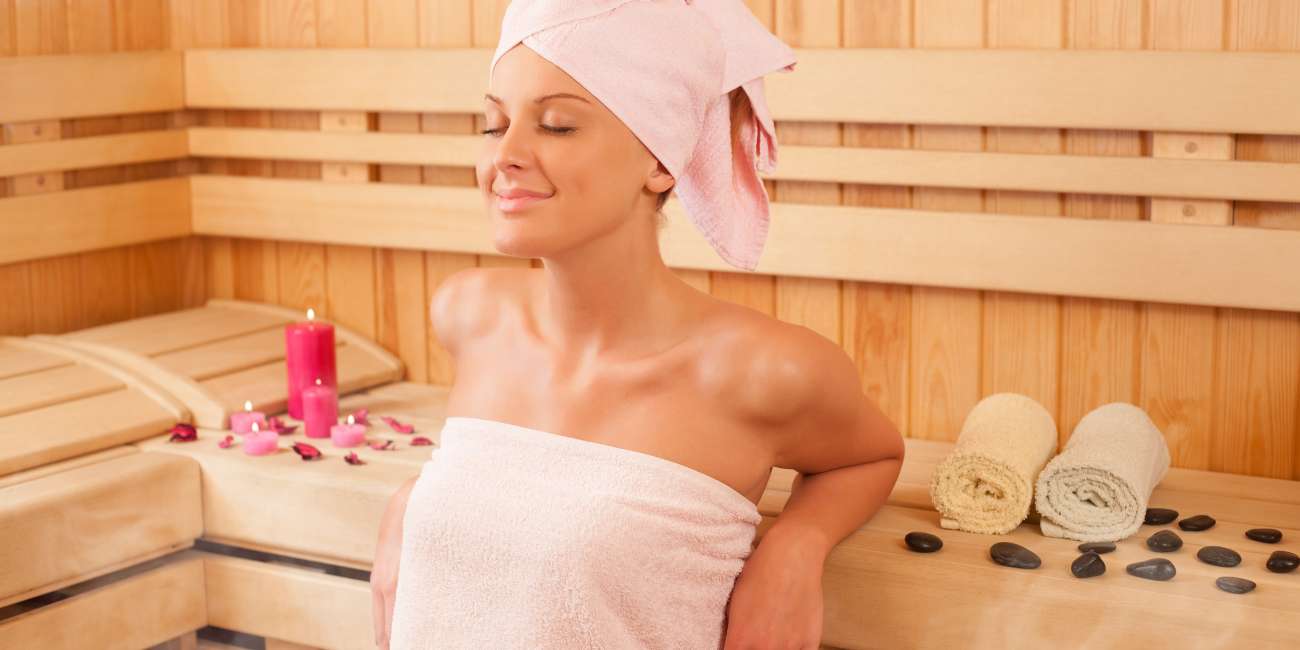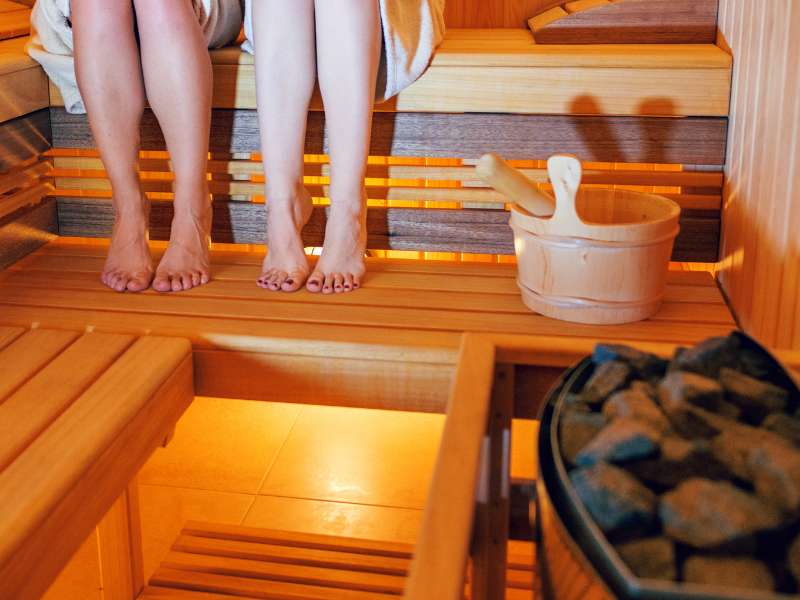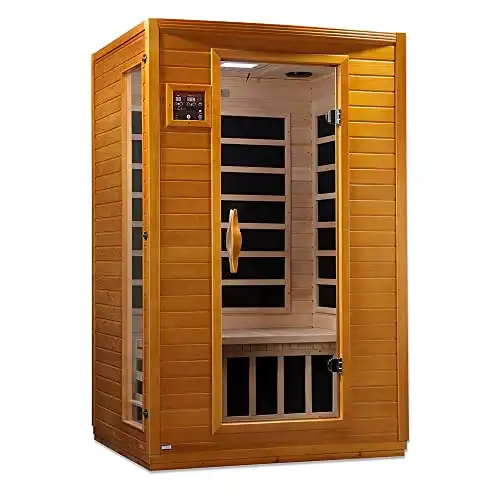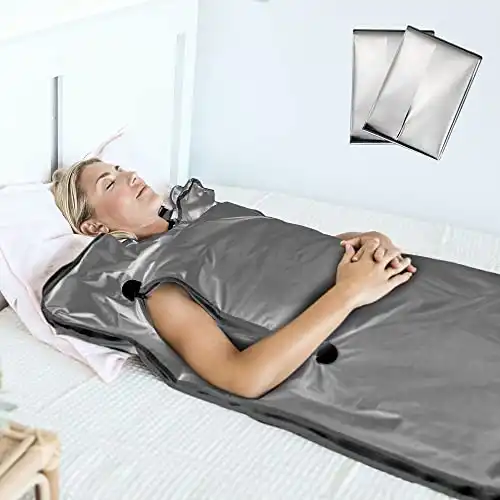After a tough workout or hike, it’s important to take care of your body. One of the best things you can do is treat yourself to a sauna session. You won’t believe all the benefits of a sauna after a workout or hike.
Different cultures have used saunas for centuries due to their myriad benefits. Read on to learn why so many exercise enthusiasts and hikers incorporate regular saunas into their fitness routines. You’ll also discover our favorite at-home sauna options so that you can make it a regular practice.
There’s no doubt that you’ll quickly come to appreciate how relaxing yet revitalizing these sweat sessions can be. You may find that after just a few minutes in the heat, you leave feeling like a new person.

After a long and strenuous workout or hike, your body needs some rest and relaxation. Sitting in a sauna helps relax your muscles and relieve muscle pain.
The heat of the sauna increases blood flow, which speeds up the recovery process and reduces stiffness. So you’ll reap the benefits of your sauna session the next day as well when you find that you feel great.
When I had severe muscle cramps in my back after a car accident, my doctor prescribed saunas as a form of heat therapy before the massage and physiotherapy to help relax my sore muscles and make the treatments more effective.
If you’re seeking physiotherapy for any type of muscle injury, ask your physiotherapist or medical professional whether you’d benefit from sauna use.
1) Saunas make you more flexible
Table of Contents
Saunas increase your flexibility by helping to relax your muscles and improve your range of motion one of my favorite benefits of a sauna after a workout. The heat from the sauna increases blood flow to the muscles, which helps loosen and relax them.
This leads to improved flexibility and a greater range of motion. Additionally, the heat can help to increase the production of collagen, which can help to improve the elasticity of the skin and connective tissue.
For an added bonus, do a stretch session after your post-workout sauna and marvel at how much further you can stretch. You’ll feel like Gumby!
2) Regular sauna use can increase your endurance
Saunas increase your endurance by helping to increase cardiovascular fitness. The heat of the sauna causes your heart to work harder, which leads to improved blood flow and an increased ability to deliver oxygen to the muscles.
This results in improved endurance and stamina. There is also some research that suggests that saunas may help improve the body’s tolerance to lactic acid, which can help reduce muscle fatigue.
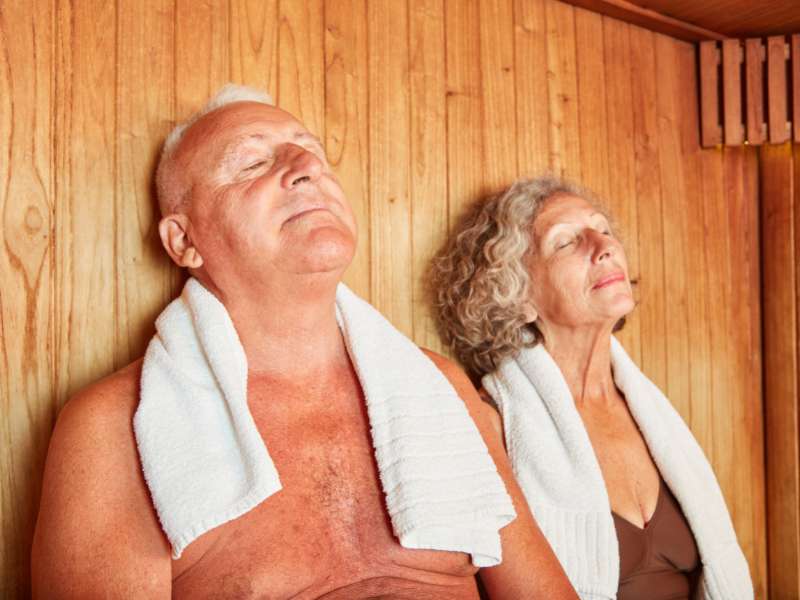
3) Saunas can improve your heart health
Regular sauna use has been shown to improve cardiovascular health and fight cardiovascular disease in a number of ways:
- help to lower blood pressure
- improves blood circulation and reduces the risk of heart disease
If you’re working out or hiking, you care about your health, and a sauna session helps give you similar cardiovascular benefits as exercise does.
But now you can sit and enjoy it and reap the compounded benefits of your workout + sauna session.
Additionally, research from the Mayo Clinic has shown that regular sauna use may help prevent cardiovascular diseases such as high blood pressure, congestive heart failure, arrhythmias and arteriosclerosis.
Note: if you have any type of heart issue, check with your doctor or medical professional first. I have low pressure, and my doctor said that while I can use saunas, I need to go into the ones that are at a lower temperature and avoid the extreme heat. She also recommended that I leave at the first sign of feeling faint.
4) Saunas can help you lose weight
One of my favorite benefits of a sauna is that can help you lose weight. Yes, sitting in a sauna actually burns calories which may reduce body fat. The heat of the sauna will cause your body to work harder to regulate its temperature, which will, in turn, cause you to burn more calories and burn body fat.
Additionally, the increased sweating that occurs in a sauna can also help to flush out toxins providing additional weight loss since most of us have organs not functioning at full capacity due to too many toxins.
It can also help you lose excess water weight providing additional weight loss. However, this is primarily for aesthetic reasons. But still, if you have a special event to go to, it can still boost your confidence.
Again, compounded with your hike or workout, you’ll be a calorie-burning machine.

5) Saunas can clear your skin
If you find that you tend to break out after an intense hike or workout from sweat-clogged pores, a post-workout sauna may help. The heat and steam of the sauna open up your pores and remove impurities from your skin and help shed dead skin cells.
Additionally, the increased blood flow caused by the sauna can also help to give your skin a healthy glow. Combined with the after-glow from your workout or hike, you’ll be practically beaming.
6) Saunas can ease respiratory problems
If you suffer from asthma or other respiratory problems, especially after an intense workout or hike, spending time in a sauna may be able to help. The heat and humidity of the sauna can help to loosen mucus in the lungs and make breathing easier.
Additionally, the increased blood flow caused by the sauna can also help to reduce inflammation in the lungs.
I’m suffering from long-term covid and am still having issues with my lungs and find that I feel better after a sauna session.
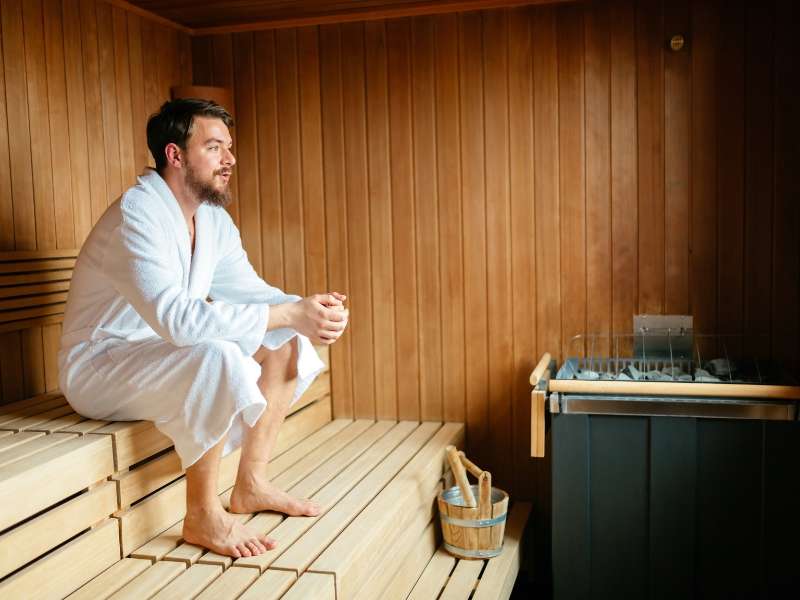
7) Saunas can boost your immune system
If you are looking for a relaxing way to boost your immune system besides taking vitamins, a sauna after a workout or hike is a good option. Studies have shown that regular sauna use can increase white blood cell counts, which are responsible for fighting off infection.
Additionally, the increased sweating caused by the sauna can also help to remove toxins from the body that could weaken the immune system.
8) Saunas can improve your brain function
Spending time in a sauna has been shown to improve brain function in a number of ways. For one, the heat of the sauna can increase blood flow to the brain, which is essential for cognitive function. So yes, according to science, just by sitting in a sauna after a workout or hike, you’re getting smarter!
Additionally, the increased sweating caused by the sauna can also help to remove toxins from the body that could impair brain function
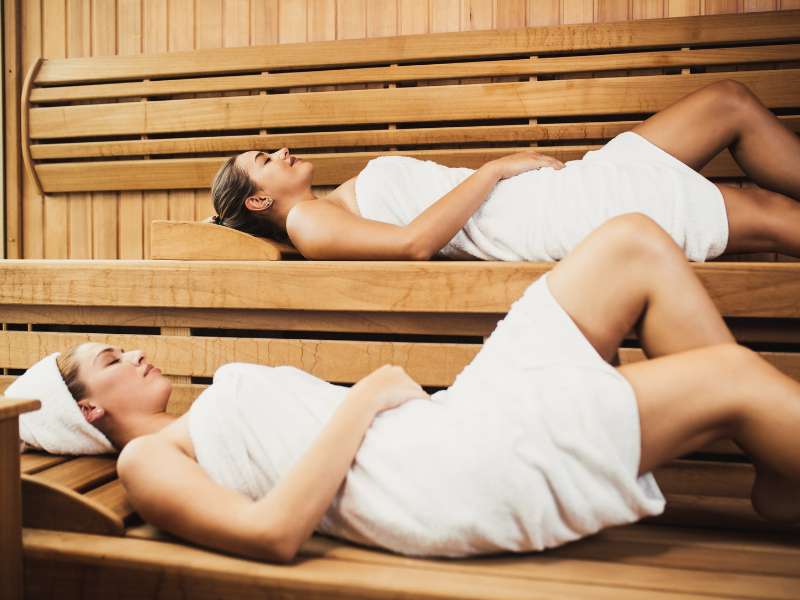
9) Saunas can increase your overall well-being
Saunas increase your overall well-being by helping to reduce stress, improve sleep and reduce pain. The heat of the sauna can cause your body to release endorphins, which are chemicals that can help to reduce pain and improve mood.
Additionally, sauna use reduces levels of the stress hormone cortisol, which can help to improve overall well-being.
The heat of the sauna can also help to improve sleep by promoting relaxation and helping to reduce muscle aches.
What Are the Different Types of Saunas?
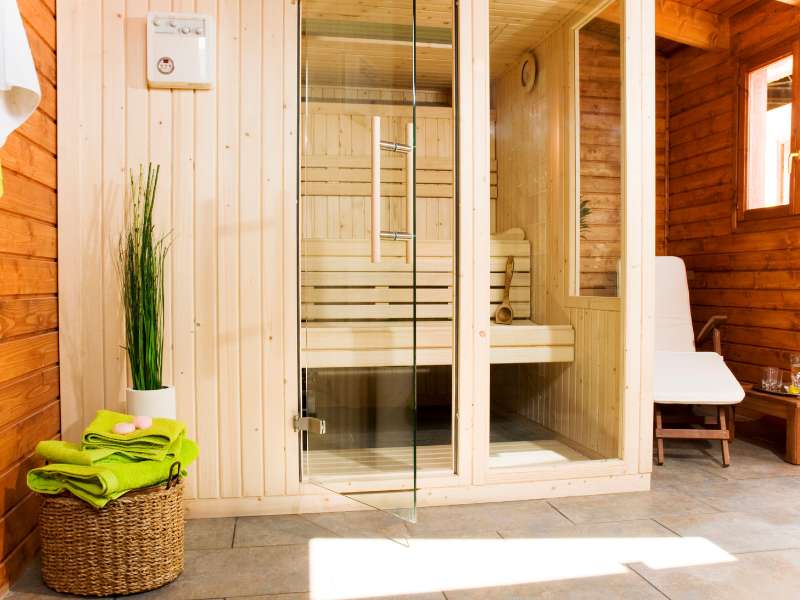
There are several different types of saunas, each with its own unique characteristics and benefits. The most common types of saunas include:
-
Traditional Finnish sauna: A dry sauna that helps to increase blood flow and improve muscle recovery after a workout or hike. The high heat and low humidity can also help to reduce muscle soreness and stiffness making it a great sauna after a workout or hike.
Temperatures in a Finnish sauna can reach up to 230°F (110°C) with low humidity. -
Infrared sauna: Beneficial to reduce post-workout muscle soreness as the heat penetrates deeply into the muscles and joints, helping to reduce soreness and stiffness.
Additionally, infrared saunas can also promote detoxification and help to improve cardiovascular fitness.Infrared saunas tend to be less hot than traditional saunas, with temperatures typically between 110-130°F (43-54°C).
-
Steam sauna: Also known as a Turkish sauna, it helps to improve breathing and can be beneficial for those who have respiratory issues. The high humidity can help to open up the airways and improve breathing.
Temperatures in a steam sauna tend to be lower than in traditional saunas, typically around 110-120°F (43-49°C).
-
Far-Infrared sauna: Considered one of the most beneficial of all saunas because of its deep penetration and ability to detoxify the body. It can also help to relieve tired muscles and stiffness in muscles and joints.
Far-infrared saunas tend to be less hot than traditional saunas, with temperatures typically between 110-130°F (43-54°C), and it is considered as the most beneficial of all saunas.
Each type of sauna has its own unique benefits and characteristics, so it’s best to try a few different types to see which one works best for you.
Which Type of Sauna After a Workout Offers the Most Benefits?
In my opinion, the best type of sauna is the one that enables you to do regular sauna bathing. If your work out at a gym and your health club only has one type of sauna, use that one since it’s convenient.
I personally don’t work out at a gym, so to make a sauna after a workout or hike a regular occurrence, I need a sauna that I can use at home.
If you have the space and are really committed to using a sauna, you can get one like this one for your home:
Since I live in an apartment, it’s not feasible to have a sauna installed in my house, so an infrared sauna blanket is a great choice.
An infrared sauna blanket offers many of the benefits of a traditional infrared sauna but is more practical for most people who want to do a sauna at home and don’t live in Finland – where every home, and even prisons, have saunas as they are considered essential.
3 Good Choices for Infrared Sauna Blankets
FAQs About the Benefits of a Sauna After a Workout or Hike
How does the heat from a sauna help your body recover after doing a winter hike or outdoor workout in cold months?
The heat from a sauna dilates blood vessels, increasing blood flow and delivering oxygen and nutrients to muscles, which helps to reduce pain and stiffness from cold exposure. Plus, it’s motivating to know you have a warm sauna waiting for you after your outdoor activity in the cold.
How long should I sit in a sauna after a workout or hike?
A 10-15 minute sauna session is usually enough. If you want to do it for longer, then get out of the sauna, and cool off. You could do a Wim Hof Icebath for even more benefits, then return to the sauna for another session.
It’s important to listen to your body and not overdo it. You also want to drink plenty of water before and after to replenish lost fluids.
You don’t want to do it too long as longer sauna sessions can lead to dehydration and heat exhaustion.
Should I do a sauna before or after my workout or hike?
It depends on which benefits you’re seeking.
Pre-Workout Sauna Session: This can warm up your muscles, increase heart rate and improve circulation, which prepares the body for physical activity and may make your exercise seem easier.
Post-Exercise Sauna Session:
This is good for relaxation and recovery and can help reduce muscle soreness and increase flexibility.
How many times per week should I do a sauna session for maximum health benefits?
While it varies from person to person, aim for 2-3 times per week of sauna bathing to get the right balance of health benefits while avoiding overuse.
Just like exercising, a single sauna session won’t provide many long-lasting benefits. You need to practice sauna bathing regularly to get real benefits.
What are the adverse effects of sauna usage?
While I’ve talked about all the amazing reasons to do a sauna after a workout or hike, there are a few adverse side effects to be aware of. Fortunately, most are preventable.
1. Dehydration: If you stay in a sauna too long, you can get dehydrated. Prevent this by drinking plenty of work before, during and afterwards. If you do find that you’re dehydrated, take some electrolytes.
2. Heat exhaustion: Overuse can result in heat exhaustion, characterized by symptoms such as dizziness, nausea, and fainting. This can be prevented by going 2-3 times a week and not staying in the sauna too long.
And if you have low blood pressure, as I do, then choose a lower sauna temperature and avoid saunas with a very hot temperature.
3. Skin irritation: The high heat and dry air in a sauna can cause skin irritation, especially if you have sensitive skin. You can prevent this by starting for just a few minutes in a lower-temperature sauna and seeing how your skin reacts. If you notice any signs of irritation, then get out of the sauna immediately.
4. Increase blood pressure: Saunas may cause a temporary increase in blood pressure. If you already have high blood pressure or cardiovascular issues, a sauna may not be a good option for you. Check with your doctor first before doing a sauna after a workout session.
